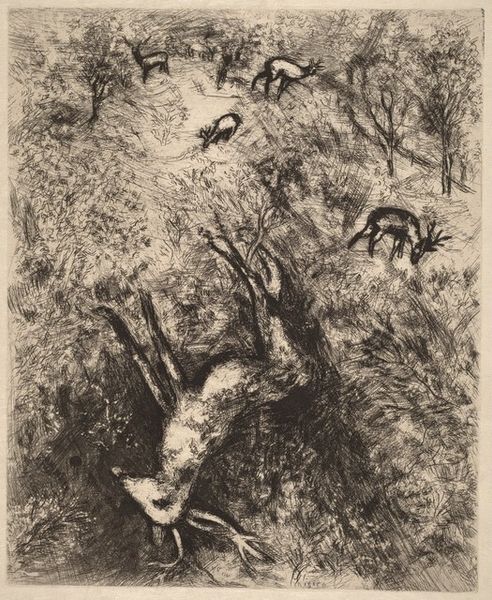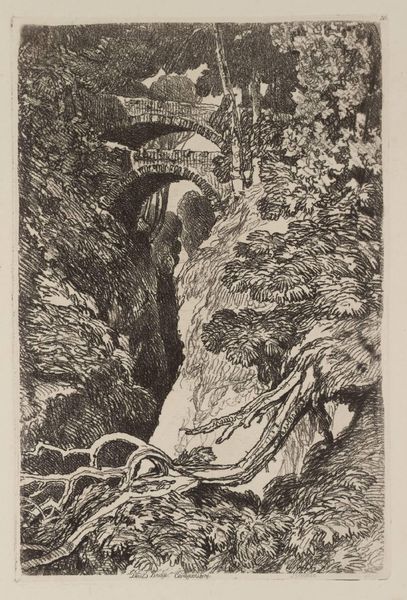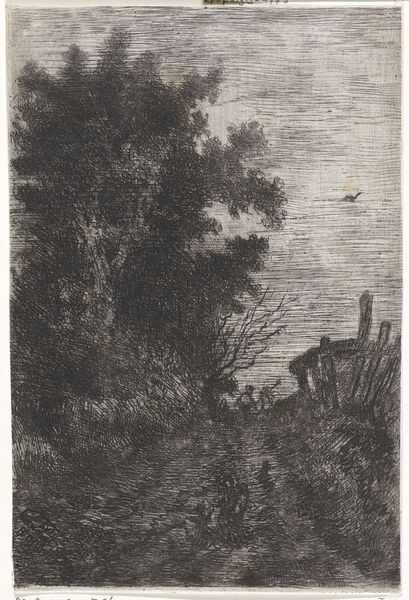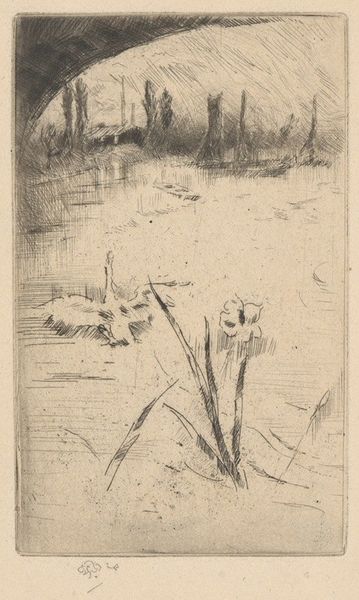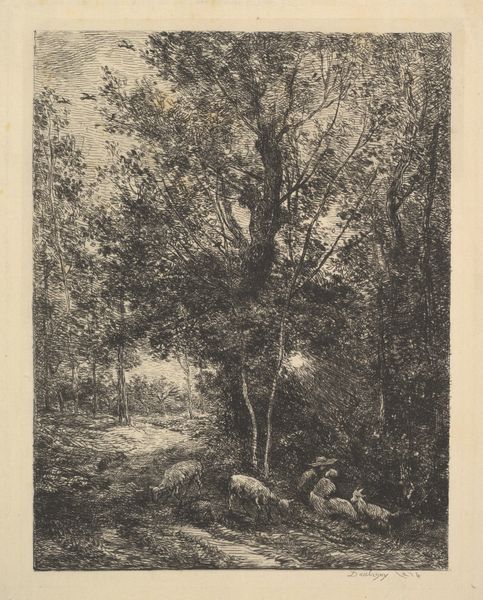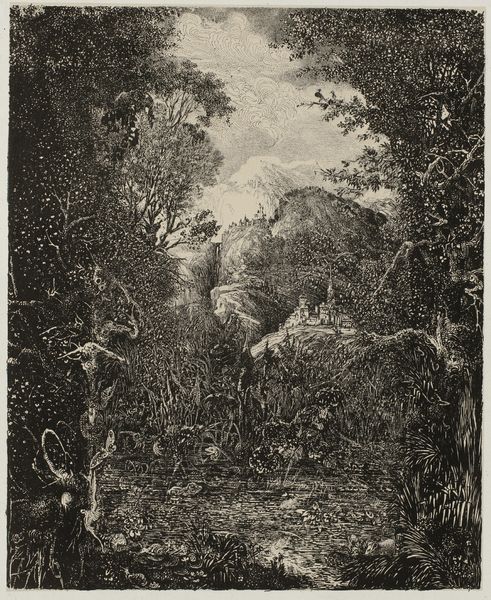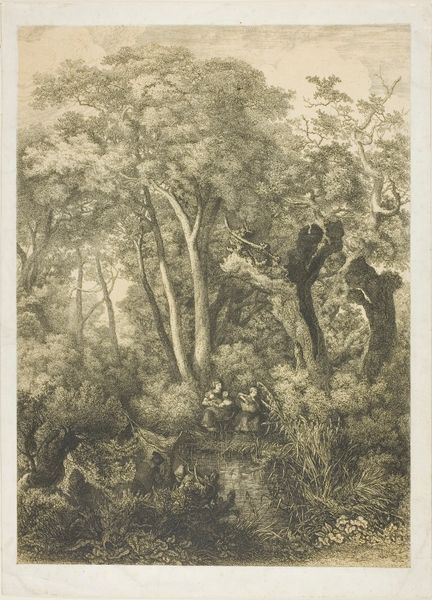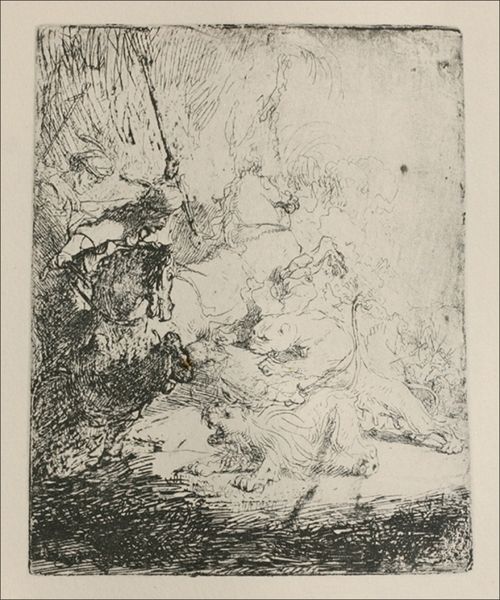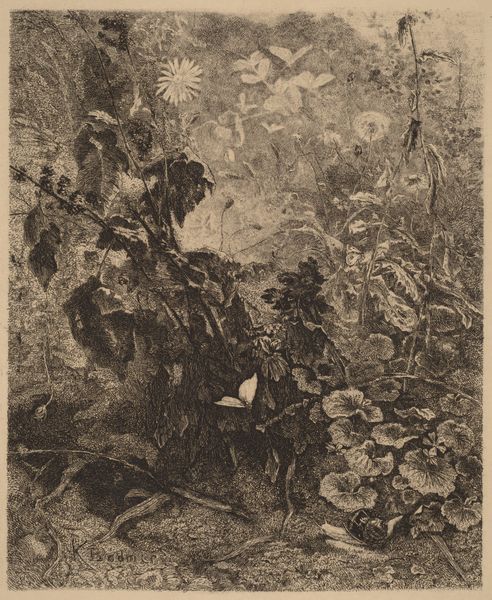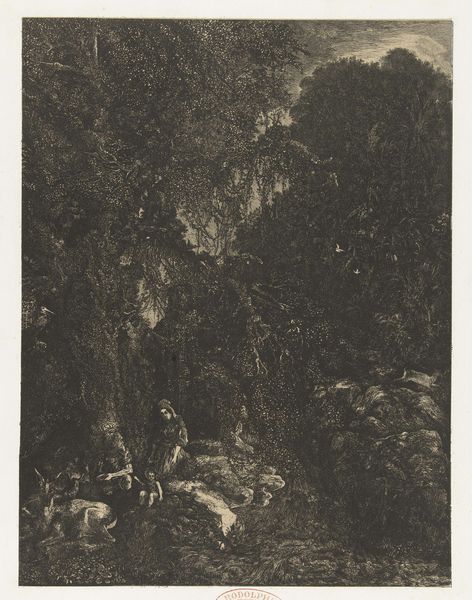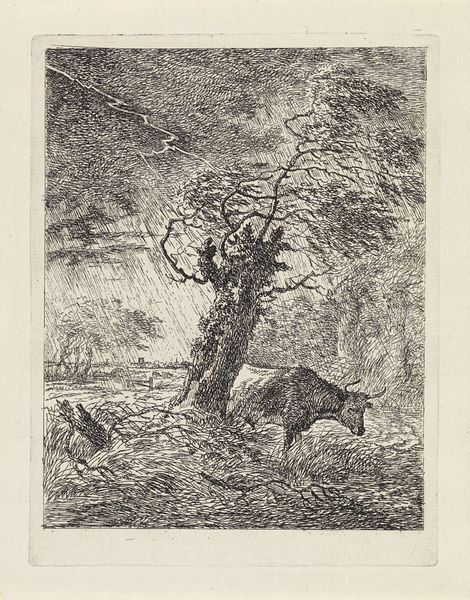
drawing, print, etching
#
drawing
# print
#
etching
#
landscape
#
figuration
#
genre-painting
#
realism
Copyright: Public Domain: Artvee
Curator: I am immediately drawn into this almost wistful sense of stillness, it feels like a forgotten corner of a once-grand garden. There's an air of mystery, as though secrets are whispered among the overgrown foliage. Editor: That's an interesting read! We are looking at "The Botanist," an etching by Mariano Fortuny Marsal, completed between 1868 and 1869. Considering it’s a print, this work feels particularly attuned to nature and figuration through an observational, realist lens. Curator: Ah, realist for sure, but the landscape… well, there's more. It feels like memory, almost a dream. Look how the figure nearly blends with the plants. Does it make you wonder, are we the botanist looking, or are we being observed, caught in a voyeuristic stance within this intensely overgrown landscape? Editor: I think the figure blends with the scene on purpose—we see the social reality of being consumed by landscape in the Industrial era. Perhaps, a commentary on how rural existence, and those who dwell within it, can feel suffocated in this period, and as such, our presence is defined by their labour? I wonder if the artist's intent was to address these realities and consider what the labor is that we are not privy to? Curator: Labor, or longing? Look at his posture! Bent, weathered…he is hunched with either knowledge or time. Also the choice of etching itself, as opposed to a larger oil. The delicacy allows you to study him as carefully as he might observe his botanical specimens. Perhaps Fortuny aimed to bring viewers in very, very close to their shared reality in this moment. Editor: An important insight. Consider how etching was then used as a process of democratization. Suddenly art could be accessible at lower costs, bringing new meaning and perspective. It’s interesting to reflect upon accessibility in light of subject matter as well. Fortuny’s etching invites contemplation about those often rendered invisible in burgeoning social hierarchies. The piece thus opens dialogue around identity, labor, and environmental relationships within societal power structures. Curator: Hmm, food for thought indeed, thank you. Fortuny's tiny scene carries quiet volumes on the many ways a life intertwines and reflects those of nature...and, also as we just recognized, those of society, as well. Editor: Yes, what a deeply evocative piece to begin a broader discussion about the self, labor, identity and art history.
Comments
No comments
Be the first to comment and join the conversation on the ultimate creative platform.
